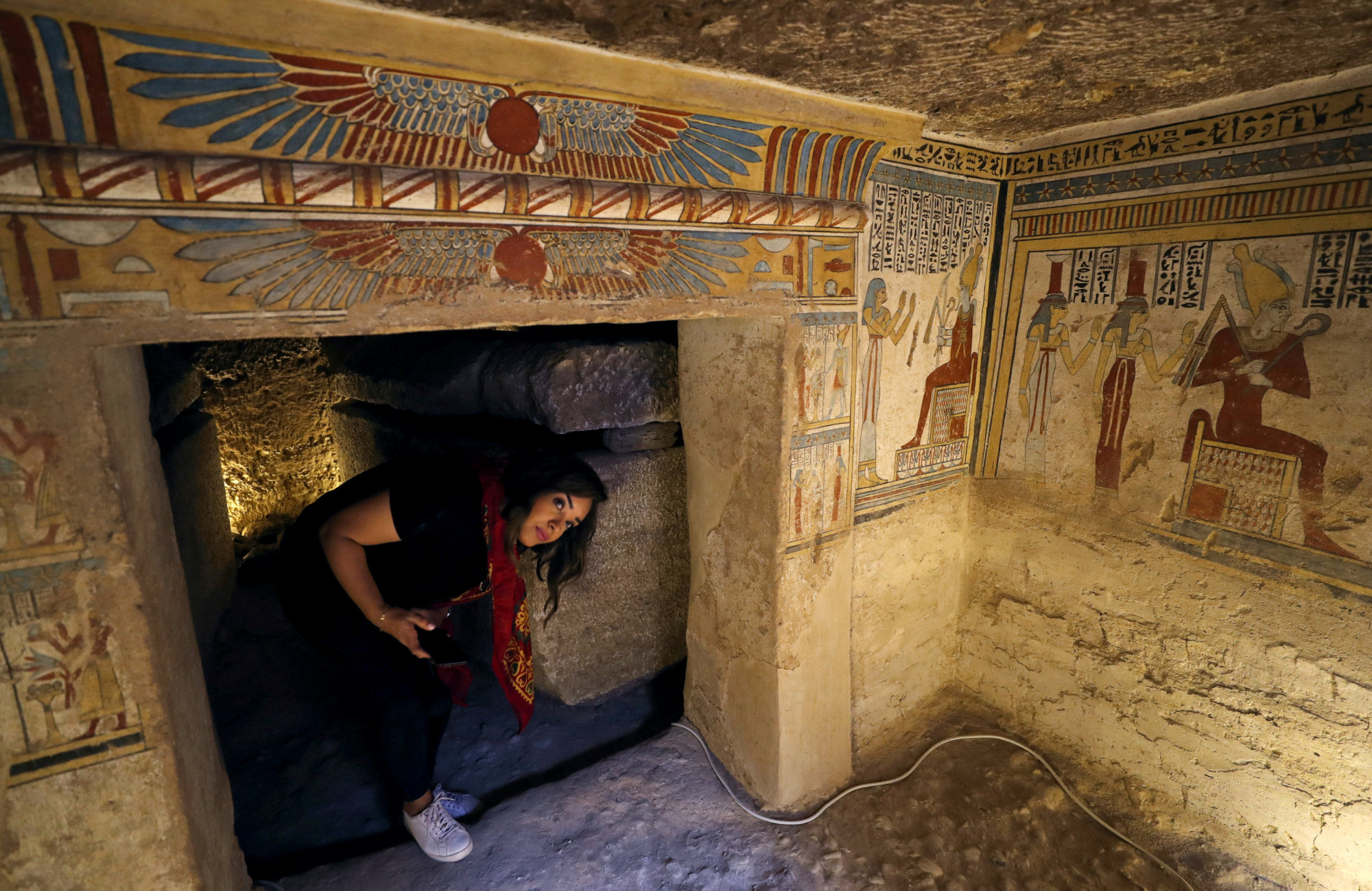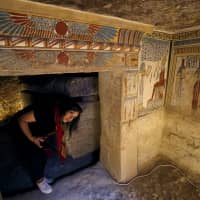Archaeologists on Friday unveiled a well preserved and finely painted tomb thought to be from the early Ptolemaic period near the Egyptian town of Sohag.
The tomb was built for a man named Tutu and his wife, and is one of seven discovered in the area last October, when authorities found smugglers digging illegally for artifacts, officials said.
Its painted walls depict funeral processions and images of the owner working in the fields, as well as his family genealogy written in hieroglyphics.
Mostafa Waziri, secretary-general of Egypt's Supreme Council of Antiquities, described the burial chamber as a "beautiful, colorful tomb."
"The tomb is made up of a central lobby, and a burial room with two stone coffins. The lobby is divided in two," he said.
"It shows images of the owner of the burial room, Tutu, giving and receiving gifts before different gods and goddesses."
"We see the same thing for his wife, Ta-Shirit-Iziz, with the difference that (we see) verses from a book, the book of the afterlife," he added.
Two mummies, a woman age 35 to 50 and a boy age 12 to 14, were on display outside the shallow burial chamber, in a desert area near the Nile about 390 km (240 miles) south of Cairo.
Around 50 mummified animals, including mice and falcons, were also recovered from the tomb.
Ptolemaic rule spanned about three centuries until the Roman conquest in 30 B.C.
Egypt's ancient sites are a draw for tourists and authorities hope new finds can help boost the sector, which has been recovering after foreigners were scared off by the North African country's 2011 popular uprising and the turmoil and insecurity that followed.


















With your current subscription plan you can comment on stories. However, before writing your first comment, please create a display name in the Profile section of your subscriber account page.